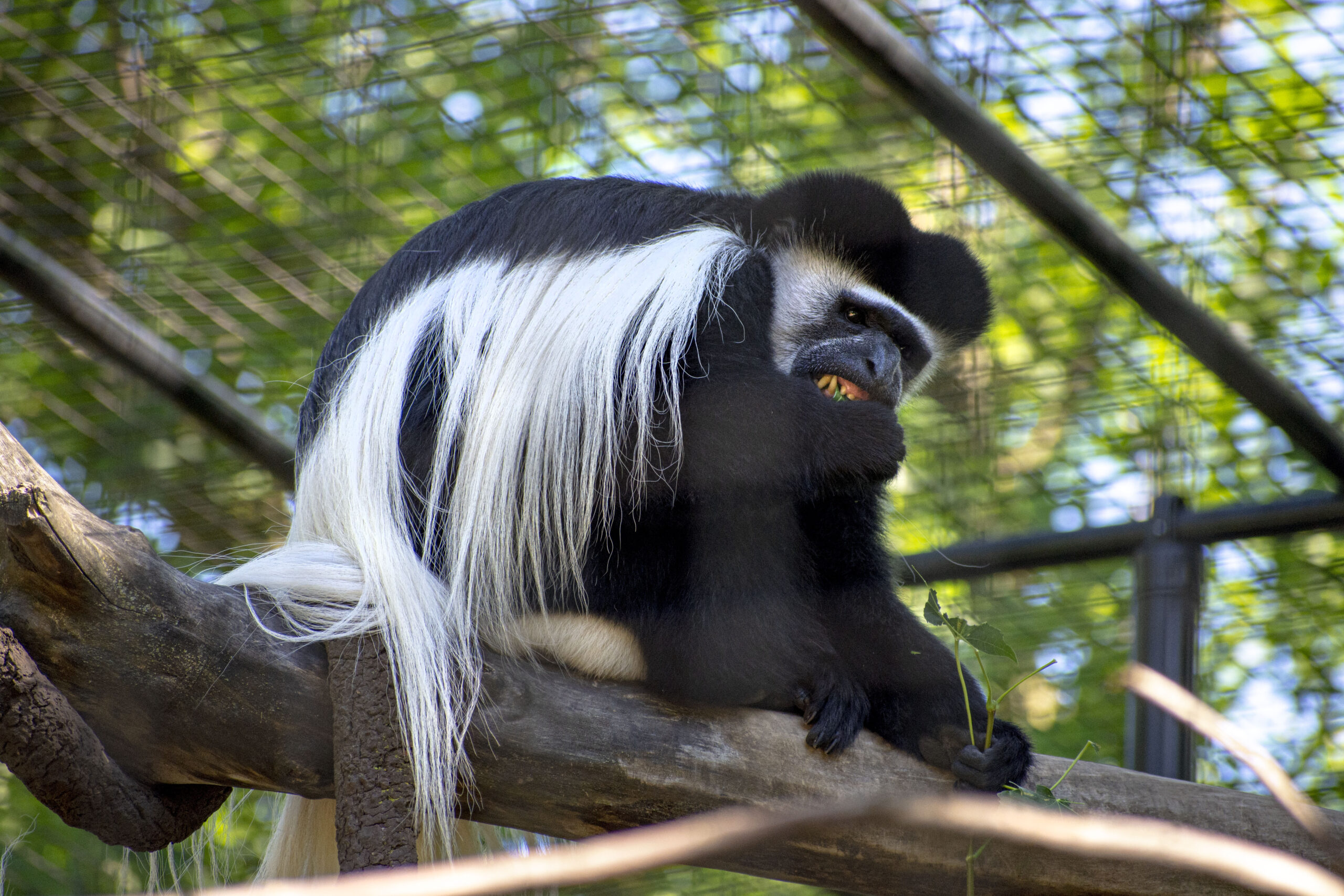The colobus monkey is an expert at seed dispersal and propagation of the forest trees and other various plants they eat.
I LIVE IN AFRICA
Colobus monkeys can most often be found in coastal forests and wooded grasslands across equatorial Africa.
I AM AN HERBIVORE
Tender leaves from high up in the trees are the colobus monkey’s favorite food. However, they will also eat unripe fruit, flowers, and tree bark.
COLOBUS MONKEYS ARE SOCIAL
Colobus monkeys are a somewhat social species, they typically live in small groups of five to fifteen individuals. Each “troop” has one male, as well as several females and young. A troop of colobus monkeys spend lots of time sleeping or sunning in trees, their long white tails dangling below.
DARE DEVILS
Colobus monkeys are known to use tree branches as trampolines, sometimes leaping up to 50 feet. By jumping up and down on them, this species is able to make leaps of up to 50 feet. Their mantle hair and tails also act as parachutes to help them during these daring leaps.
HELPING THE COLOBUS MONKEY IN THE WILD
The Fort Wayne Children’s Zoo supports Pan African Sanctuary Alliance, a coalition of sanctuaries across Africa that work to rescue and rehabilitate monkeys and apes, as well as conduct research on different species.

